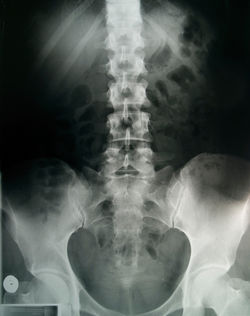 |  |  |  |  |
|---|---|---|---|---|
 |  |  |  |  |
 |  |  |  |  |
 |  |  |  |  |
 |  |  |  |  |
 |  |  |  |  |
 |  |  |  |  |
 |  |  |

Billi Research Group
Engineering devices and technologies to diagnose, monitor, and treat musculoskeletal diseases
Orthopaedic Biology, Digital Health, Musculoskeletal Research, Wearable Technologies, 3D Printing, Smart and Functional Materials, and Smart Textiles. Particle Analysis, Bone on-a-chip, Wearable Technologies, Sensor Fusion
Protocols
At the core of our ability to perform unique particle characterization, is our advanced purification protocol. Using an optimized digestion and density gradient centrifugation, the particles are purified from any proteinaceous content. Experiments conducted in our lab showed negligible level of organic contaminants after purification. The protocol is highly flexible and can be applied to a variety of materials: UHMWPE, PEEK, Al2O3, DLC, CoCr, Ti6Al4V and others. Since it is based on density gradient centrifugation, there is virtually no limit to the type of material that can be isolated. In addition, particles of several different materials can be separated simultaneously from a single sample, providing they have different densities. Furthermore, the method has been optimized also for synovial fluid and tissues.
Dynamic Laser Scattering (DLS) - Particles are classified by size (equivalent spherical diameter), number, and volume. There are limits associated to this type of characterization discussed here. However, this method offers a rapid turnaround time, and excellent monetary value. It is offered in two options:
1. BASIC - Only DLS characterization. More suited for basic classification and for samples that do not contain a high percentage of contaminants (i.e. particles not produced by the bearing surfaces).
2. STANDARD - Same as BASIC plus high-resolution field emission scanning electron microscopy (FE-SEM) for qualitative analysis of characteristic particle shapes, and energy-dispersive x-ray analysis (EDS) analysis for qualitative chemical composition.
Silicon Wafer Display (SWD) - The particles are deposited directly onto ultra-smooth, high contrast wafers during the density gradient purification. This provides recovery of virtually all of the particles in the sample, including those as small as few nanometers (recovery rate higher than 90%), and excellent dispersion for accurate elemental analysis and morphological characterization using SEM, STEM and EDS. We offer the SWD charcacterization in protocol in two options:
1. ADVANCED - the most comprehensive method. It is the achievement of five years of intense research in particle characterization. It relies on the advanced purification protocol but uses a much more detailed, quantitative SEM/EDS and morphological analysis of the particles. The particles are classified by number, chemical composition, and several morphological parameters (exceeding those defined by ASTM F1877-05): dmax, dmin, area, perimeter, fiber length, fiber breadth, equivalent diameter, form factor, aspect ratio, elongation and roundness. 3-D images of sample particles are also provided. In addition, a series of sophisticated algorithms based on Discrete Fourier Analysis are used for quantitative analysis of particle shape and volume. The result is a detailed representation of the characteristics of the particle of interest and contaminants. We recommend this method when a much more detailed information on the particles is requested or when the sample contains a high percentage of contaminants.
2. EXPEDITED: Particles are processed accordinng to the SWD but are not characterized morphologically. The Si wafers is packaged and sent to the customer for any further analysis.
Combination SWD/DLS - Particles are purified by density gradient centrifugation. All the samples are analyzed via DLS Standard Protocol. One samples per condition is analyzed via SWD Advanced to provide complete characterization of particles’ morphology. This option offers shorter turnaround time compare to SWD Advanced, excellent monetary value, and it is suitable for relatively homogeneous samples.
SECURE DATA STORAGE - All the data, documents, and samples are stored and kept for five years unless otherwise specified. You can have access to your data, documents and samples at any time during this period. The protocols used conform and exceed both ISO and ASTM standards.